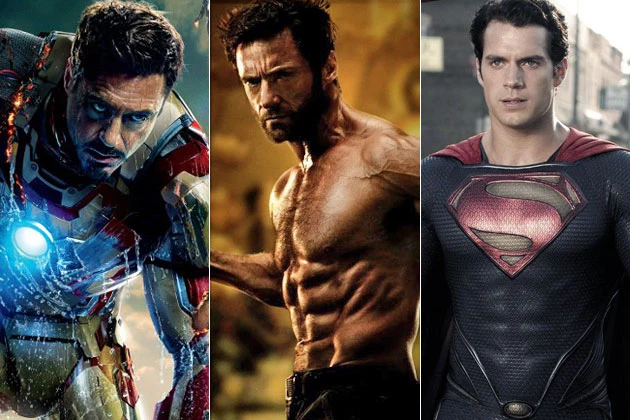In recent years we have seen a surge in the production of
superhero films. Marvel’s “The Avengers,” “The Dark Knight,” and “The Dark
Knight Rises” have grossed over $400,000 domestic, and sit among the top 50
highest grossing films of all time (not adjusted for inflation). This statistic
is no fluke because, as I was delightedly researching superhero movies, I found
that in 1978 Superman the movie was released and became the second highest
grossing film in that year behind Grease. Talk about foreshadowing right? Well,
after reading that particular bit of information and learning that in the next
five years there will be 11 superhero films released, I asked myself, “Why is
it that people keep coming back to Superheroes?” and “Will greedy film studios
ruin the future of superhero movies by flooding the market with them year after
year?”
First, I’ll address the reason why people keep coming back.
This is no mystery or surprise in any way. The reason why people flood to
superhero movies every year is simple, superhero movies are awesome.
Superheroes have been an important part of our culture since 1933 when the
first comic book format publication, “Famous Funnies,” was introduced. Since
then, the United States has produced the most titles in terms of quantity. Today,
comic book sales reach about $418 Million a year, so obviously the market for
comic books is massive. The captivating story lines, amazing abilities and
positive messages provide great source material for new interpretations of
these characters. The Dark Knight Trilogy is a great example of what these
characters are capable of being. The Dark Knight was the first comic book movie
that didn’t necessarily feel like a comic book movie, which tells me that these
characters are capable of being more than just comic book characters. That
makes it much easier to adapt to the look and style of the era. In my youth
Batman and Superman were campy and almost parodies of themselves. While I
enjoyed these movies, it never seemed like they would ever be good enough to
warrant an Oscar nod, until of course Heath Ledger changed that and added a
whole new dimension to superheroes making it easy for children and adults alike
to be entertained.
The question of whether movie studios will take it too far is
yet to be seen. There have been many superhero flops, but for the most part
these movies are still attracting huge crowds and sometimes breaking records.
There is always a possibility that studios can over-stay their welcome but as
long as my generation and those that follow continue enjoying these storylines
and characters, and studios continue to evolve their productions with the times,
the longer I will accept these movies as actual films instead of just comic book
movies.






















